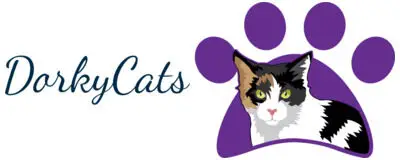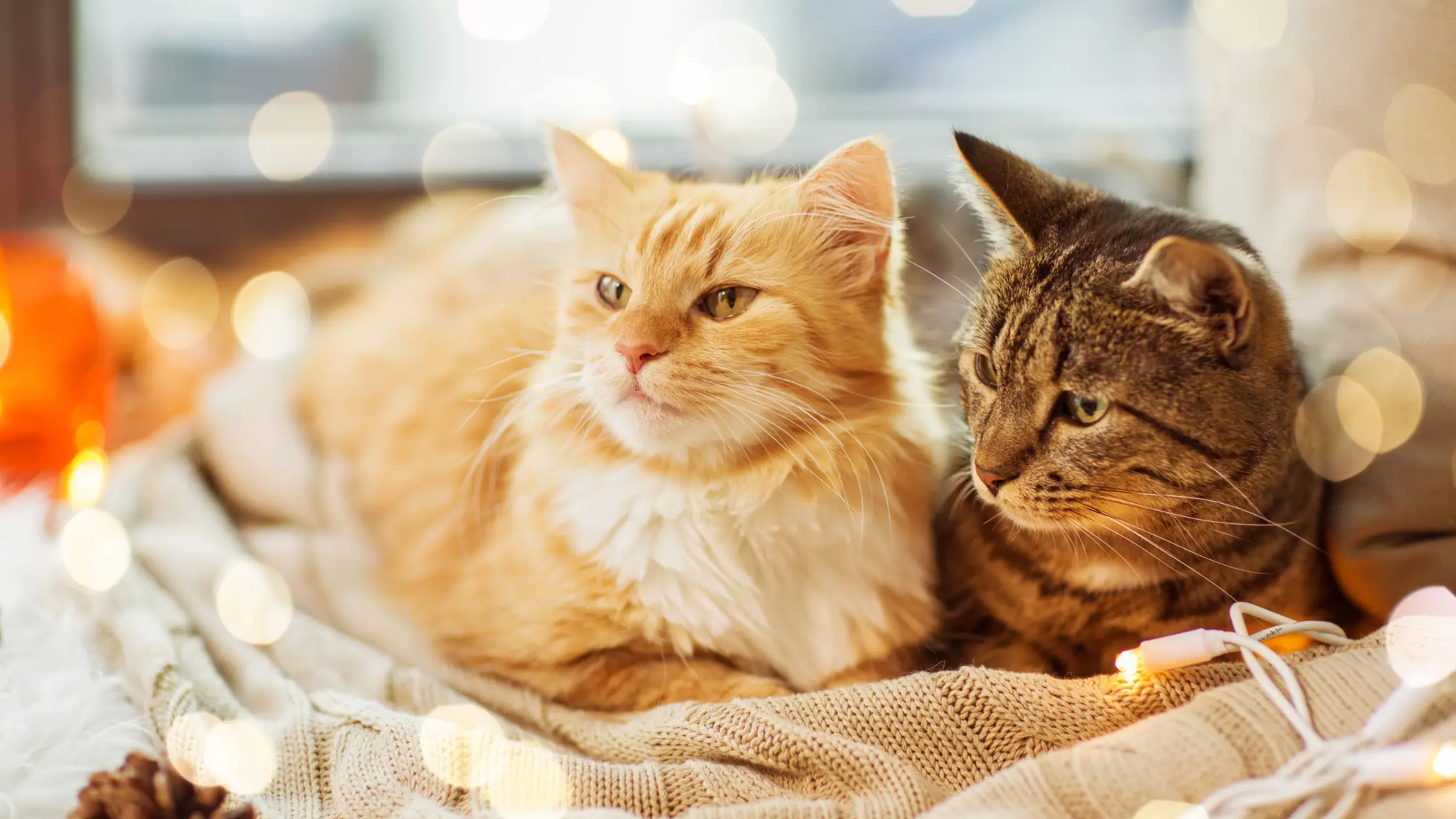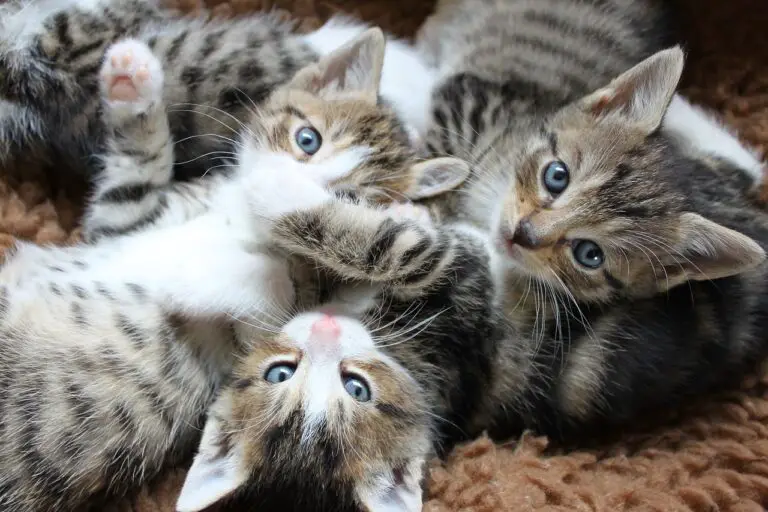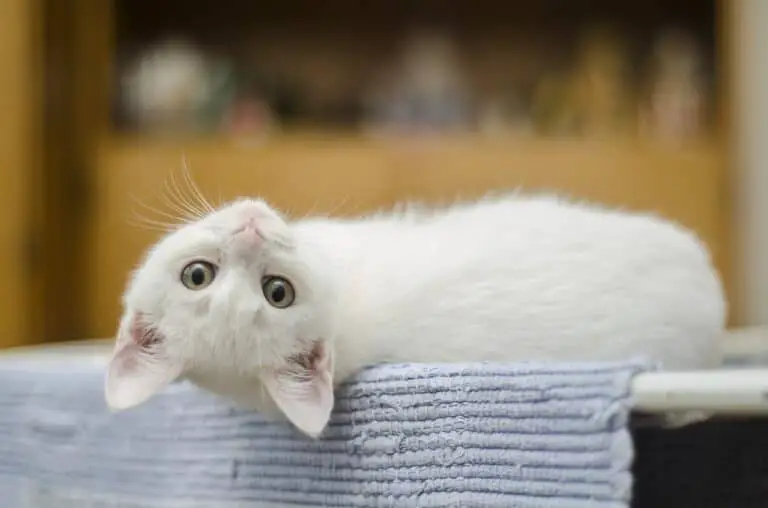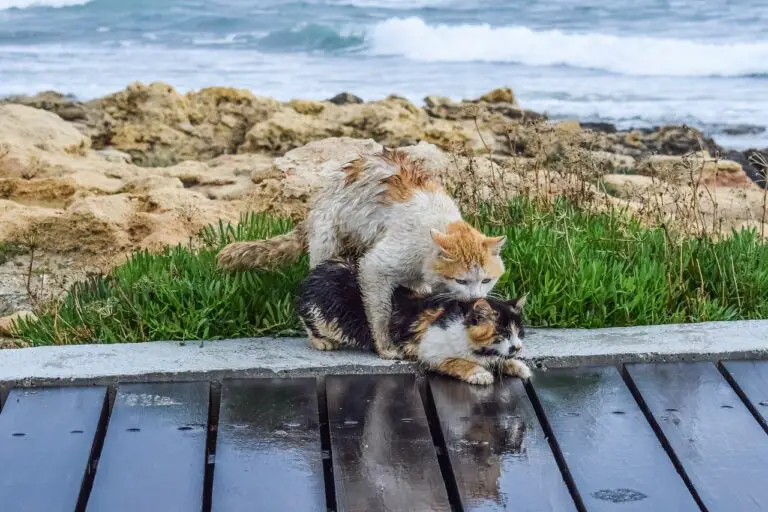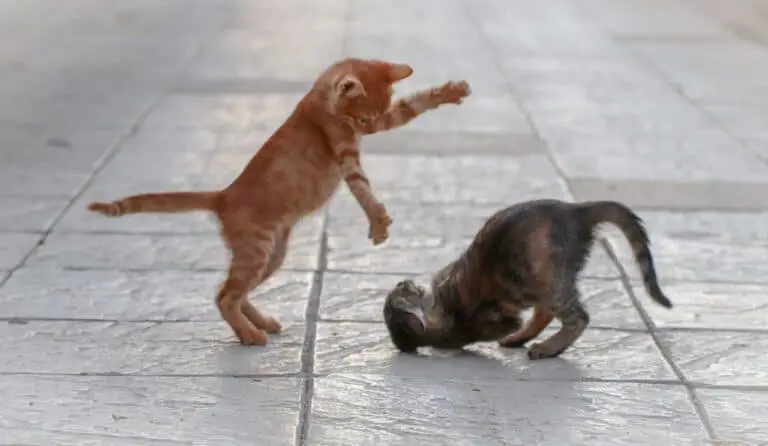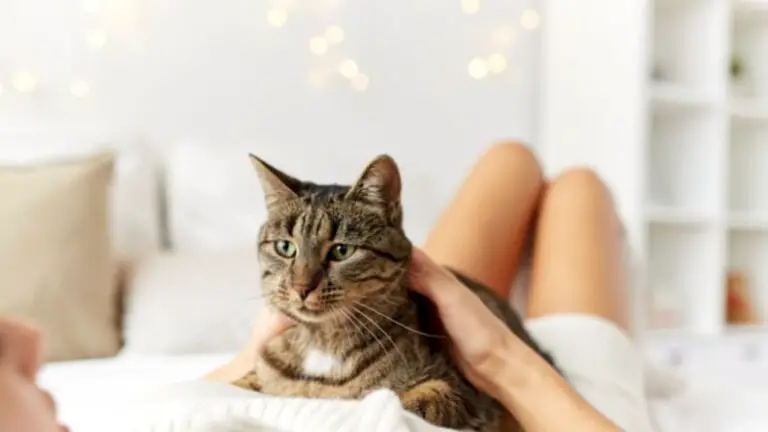CAN CATS BE GAY? 5 THINGS TO KNOW
Can cats be gay? At times cats can demonstrate weird behavior that their owner could misunderstand.
While male and female cats show affection to cats of the same gender, they are not gay as we intend them. Cats follow their instincts and interact socially with other cats of the same gender, but these are not meant to be sexual interactions.
Let’s know more about cats interacting with other casts of the same gender.

CAN CATS BE GAY?
Sexual orientation is a complex phenomenon that is not fully understood even in humans, let alone animals.
While some research suggests that homosexuality exists in various animal species, it is essential to note that the concept of sexual orientation is a human construct and may not apply similarly to non-human animals.
As for cats specifically, no clear evidence suggests they can have a sexual orientation as humans do. However, there have been reports of same-sex behavior in cats, such as two male cats grooming each other or engaging in mounting behavior.
Such behaviors could be due to social bonding, dominance, or simply a response to hormonal changes. However, without more conclusive evidence, it is difficult to make any definitive statements about the sexual preferences of cats.
WHAT DOES SAME-SEX BEHAVIOR IN CATS MEAN?
Same-sex behavior refers to any type of sexual or romantic behavior between individuals of the same sex or gender. This can include physical interactions such as kissing, touching, or sexual activity and emotional connections such as romantic attraction or bonding.
Same-sex behavior is observed in many animal species and humans and can have various meanings depending on the context in which it occurs.
In some cases, same-sex behavior may be a way for animals to bond with each other or establish dominance. In humans, same-sex behavior can be a way to express love and intimacy, explore one’s own sexuality or gender identity, or enjoy physical pleasure.
Same-sex behavior does not necessarily indicate an individual’s sexual orientation or identity. For example, some individuals may engage in same-sex behavior but still identify as heterosexual, while others may identify as LGBTQ+ but not engage in same-sex behavior.
WHAT DOES IT MEAN WHEN CATS SHOW INSTANCES OF SAME-SEX BEHAVIOR?
Same-sex behavior has been observed in many animal species, including cats. The reasons for this behavior can be complex.
Some of the possible explanations for same-sex behavior in cats and other animals include the following:
1. SOCIAL BONDING
ìSame-sex behavior, such as grooming or nuzzling, can help strengthen social bonds between animals. In some species, same-sex pairs may form long-lasting bonds similar to heterosexual pairs.
2. DOMINANCE
In some cases, same-sex behavior may be a way for animals to establish dominance over each other. For example, mounting behavior between two male cats may allow one cat to assert dominance over another.
3. HORMONAL CHANGES
Hormonal changes can play a role in same-sex behavior in animals and humans. Changes in hormone levels can influence an animal’s sexual behavior and preferences.
It is important to note that while same-sex behavior has been observed in many animal species, it does not necessarily mean that animals have the same concepts of sexuality and sexual orientation as humans do.
Nonetheless, studying same-sex behavior in animals can help us better understand the diversity of sexual behavior in the natural world.
CAN YOU COMPARE HUMAN AND CAT SEXUALITY?

Human sexuality and cat sexuality are fundamentally different due to various factors.
Humans are capable of experiencing sexual attraction, desire, and arousal and can engage in sexual behavior for a variety of reasons, including pleasure, procreation, and emotional connection.
Humans also have complex social structures and cultural beliefs that shape their sexual behavior and identity.
Conversely, cats do not have the same cognitive or emotional complexity level as humans. Therefore their sexual behavior is primarily driven by instinct and biological factors.
Cats are seasonal breeders whose reproductive cycles are primarily controlled by hormonal changes, which dictate when they are receptive to mating.
While cats are known to engage in same-sex behavior and even form long-lasting social bonds, they do not have the same range of sexual behaviors or identities as humans.
Therefore, while there may be some similarities in the basic mechanics of sexual behavior between humans and cats, comparing the two meaningfully is inaccurate.
CAN HUMANS MISUNDERSTAND CATS SEXUAL BEHAVIOUR?
A cat’s sexual behavior can be misinterpreted, especially by humans who may project their own ideas about sexuality onto their pets.
For example, a cat may engage in same-sex behavior, such as mounting or grooming, which could be misinterpreted as a sign of sexual attraction or preference. However, it is essential to note that same-sex behavior in cats is not necessarily indicative of sexual orientation or identity in the same way that it is for humans.
Other factors, such as social bonding, dominance, or hormonal changes, can influence a cat’s sexual behavior, and it is essential to understand these factors to interpret their behavior accurately.
Additionally, cats may engage in sexual behavior with inanimate objects or even humans, which some humans see as inappropriate or disturbing.
Ultimately, it is essential to approach a cat’s sexual behavior with a clear understanding of the species’ natural behavior and an awareness of any potential human biases or projections.
Consulting with a veterinarian or animal behaviorist can also help understand a cat’s behavior and address any concerns or issues.
WHY COULD A MALE CAT BE MOUNTING ANOTHER MALE CAT?
A male cat mounting another male cat could have a variety of reasons that are not necessarily related to sexual attraction or preference.
Some of the possible explanations for this behavior include the following:
- Dominance: Male cats may mount other male cats as a way to assert dominance or establish their position in the social hierarchy. This behavior may be more common among cats who are unfamiliar with each other or competing for resources such as food or territory.
- Play: Cats, like many animals, engage in play behaviors that may involve mounting or wrestling. This type of play is often a way for cats to practice hunting and fighting skills and is usually unrelated to sexual behavior.
- Hormonal changes: Hormonal changes can influence a cat’s sexual behavior, just as they do in humans. Changes in testosterone levels, for example, can lead to increased sexual activity and mounting behavior.
It is important to note that mounting behavior between male cats is not necessarily indicative of homosexuality or sexual orientation in the same way that it is for humans.
Instead, this behavior is typically related to other factors, such as dominance or play.
IS MUTUAL GROOMING IN CATS CONSIDERED SEXUAL BEHAVIOUR?
Mutual grooming in cats is not typically considered sexual behavior. Grooming is a natural behavior for cats and is used to keep their fur clean and free of tangles or mats.
Mutual grooming, where two cats groom each other, is also a common social behavior that helps to reinforce social bonds and establish trust between cats.
While grooming may involve physical contact between cats, it is not necessarily related to sexual attraction or behavior. Instead, it is typically a way for cats to express affection and form social connections with each other.
Cats may engage in grooming as part of their mating rituals, so the context and behavior of the cats should be considered when interpreting this behavior.
FREQUENTLY ASKED QUESTIONS
Can cats be Lgbtq?
Cats do not have the same sexual orientation and identity as humans, so it is not accurate to say that cats can be LGBTQ in the same way humans can. However, cats are known to engage in same-sex behavior and may form strong social bonds with members of the same sex.
Can two male cats bond?
Yes, two male cats can bond and form strong social relationships with each other. Like many social animals, cats can form close bonds with members of their own species, regardless of their sex or gender.
Male cats may form powerful bonds with other males, as they are more likely to engage in play and social grooming behaviors with members of the same sex.
These bonds can help reduce stress and aggression and provide cats companionship and security.
Can cats tell each other’s gender?
Cats can usually tell each other’s gender through scent, body language, and vocalizations. Male and female cats have different physical characteristics and scents, which other cats can detect through their sense of smell.
In addition, cats use body language and vocalizations to communicate with each other and may use different postures or sounds depending on their gender or social status.
For example, male cats may use vocalizations such as growls or yowls to establish dominance or signal aggression. In contrast, female cats may use more subtle body language cues to communicate with other cats.
Cats are highly perceptive and attuned to the behaviors and characteristics of other cats and can distinguish between males and females based on various sensory cues.
Can cats become a couple?
Cats do not form romantic relationships as humans do and, therefore, cannot become a “couple” in the traditional sense.
However, cats are social animals capable of forming close bonds with each other, which can be characterized by mutual grooming, playing, and spending time together.
In some cases, cats may form particularly strong bonds with each other, which can be compared to a close friendship or partnership. These bonds can help to reduce stress, anxiety, and aggression and provide cats with a sense of companionship and security.
